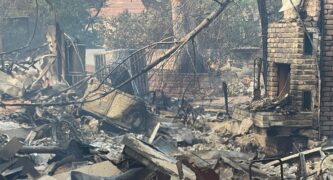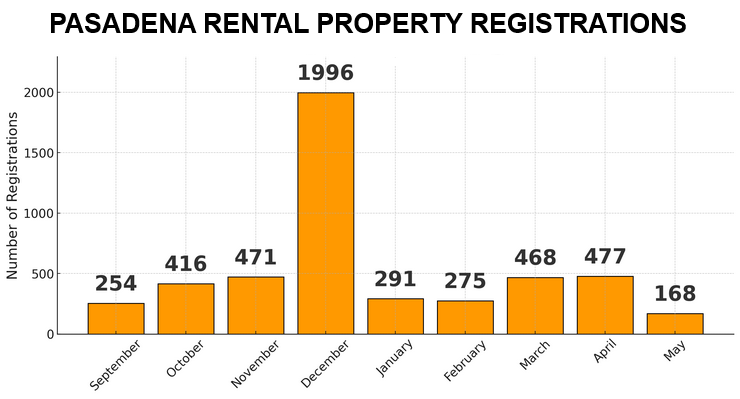
“So we have been participating, there are various task forces that were established including sub work groups for various aspects of the debris removal program,” said Israel Del Toro, deputy director with the planning department, who provided a comprehensive overview of the cleanup initiatives to the Council.
The debris removal process consists of two phases.
Phase One, which has been completed countywide including Pasadena, involved the Environmental Protection Agency removing household hazardous materials such as paint, paint thinners, pool chemicals, oils, pesticides, cleaners, lithium batteries from EV vehicles, and propane tanks from affected properties.
Phase Two, which is currently underway, involves the Army Corps of Engineers removing fire-damaged debris, foundations, vehicles, and hazardous trees.
In Pasadena, 148 parcels were seriously affected by the fire, with 52 of those properties deferred during Phase One due to accessibility issues or remaining structures that posed hazards to workers. This represents about one-third of affected properties, consistent with countywide figures where 4,381 out of 13,612 affected parcels (32%) were deferred. These deferred properties will be addressed during Phase Two operations.
The City has received 125 Right of Entry (ROE) applications from property owners since applications opened on January 28. Of these, 37 applications (30%) have been transmitted to the Army Corps of Engineers for processing. Countywide, approximately 20% of applications have reached this stage.
The deadline for both opt-in and opt-out applications is March 31.
Phase Two debris removal began on February 22 in Council District 4, with work starting in District 1 the following week. Schools were the first to have debris removed in Pasadena, prior to any residential debris removal. Del Toro personally observed the operations, noting the comprehensive safety measures in place.
“When I arrived to the site, the first thing I noticed is that there was traffic control in place at the residential intersection and they also had traffic control in place at the site,” Del Toro said. “In addition to that, there was also fiber logs along the gutters on both sides of the street to protect the watershed and continuous watering taking place.”
The cleanup operation involves a highly coordinated logistical process, with various types of waste being hauled separately to different destinations.
Waste streams include soil, concrete, metal, fire ash and debris, asbestos, and household hazardous materials.
For a typical 1,500-square-foot house, approximately 15 truckloads are required to clear the property of debris. The operation is tightly controlled, with multiple air monitoring stations in place and personal air monitors worn by workers. Trucks are equipped with GPS tracking and are closely monitored to minimize neighborhood impacts.
For property owners who opt out of the government program, the City has established a Local Private Property Debris Removal Program, which went live on February 24.
This program requires property owners to submit a site plan, tree inventory, and follow designated haul routes established by the Department of Transportation. So far, the City has received one opt-out application.
Del Toro noted that City staff has been advising property owners about potential issues with keeping foundations, explaining that in most cases the foundations are compromised and would not meet current code standards without significant modifications.
Under the approved MOU, Pasadena will pay a proportional share of the program costs based on a formula.
The MOU includes provisions for collaboration on haul routes, construction hours, notifications, watershed protection, and environmental protection measures. The MOU also requires a 24-hour notice before debris removal begins at a property.
The City will have access to a detailed dashboard to track the status of properties in the program, which will help staff better assist residents with questions.
The Army Corps has committed to completing Phase Two debris removal by January 2026.
The Council approved finding the action exempt from CEQA and authorized the City Manager to enter into the MOU with the County of Los Angeles, also finding the MOU exempt from competitive bidding.
The City will continue outreach to affected property owners, including a webinar scheduled for March 20. Officials are also addressing concerns about property owners who may be unresponsive.














 6 comments
6 comments


